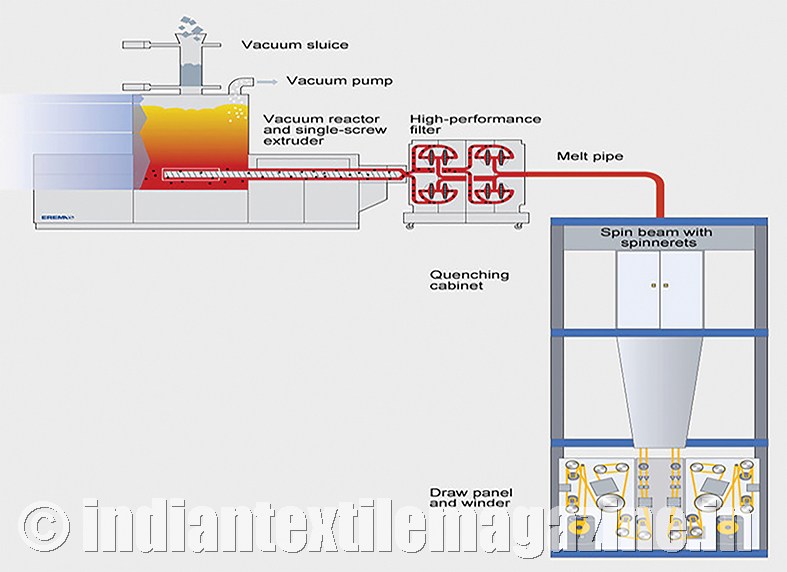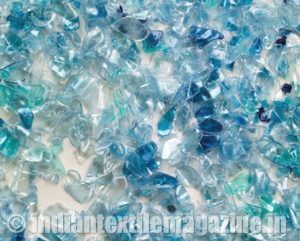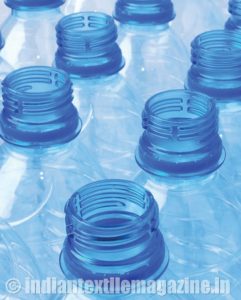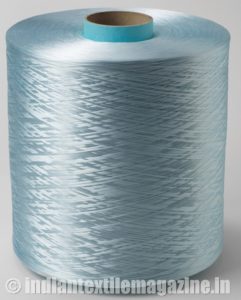All of us use plastic bottles almost every day. As compared to glass, the material most used for bottle-making in the past years, plastic bottles have the distinct advantage of being light weight and almost unbreakable. Now-a-days, most producers and consumers favour polyethylene terephthalate (PET) bottles. Thus plastic bottles are really most of the time actually “polyester” bottles.
 In many regions of the world recycling is an option. In Asia, the probability that an empty bottle will be recycled is more than 75%.
In many regions of the world recycling is an option. In Asia, the probability that an empty bottle will be recycled is more than 75%.
Recycling of plastic bottles in Asia is widespread, especially because entrepreneurs in China and India recognized quite early that PET bottles are in fact valuable raw material. Using recycled polyester flakes offers advantages both economical (flakes are cheaper than virgin chips) and ecological (due to the sustainability and good image or green label aspect).
Recycling PET bottles
A long and complex process chain is needed to turn used bottles into usable raw material. It all starts with the collection of the bottles and pressing them into bales. Afterwards, the bales are opened and the contents sorted out and ground. The flakes obtained are washed (cold and hot) and separated from the polyolefin, which comes from caps and gaskets. After drying and metal separation, the flakes are filled into silos or big bags.
One of the main uses for recycled polyester is the spinning of staple fibers, which can be used for instance as spun yarns, textile fillings or nonwoven materials.
The collection and recycling rate of plastic bottles is growing worldwide. Therefore it is time to explore new end uses of the recycled PET such as for carpet.
Spinning BCF yarn from PET and R-PET
PET fibres offer numerous advantages in carpet applications. Especially their high stain resistance which is even higher than that of chemically treated polyamide bulk continuous filament or PA BCF. Moreover, PET can be spun in undyed form, which is not the case for polypropylene or PP. Undyed yarns can be twisted, heat set, dyed and tufted or the finished carpet can be printed.
Compared to staple fibre production, using R-PET for manufacturing continuous filaments is more challenging. In filament spinning the quality of the yarn is determined by the homogeneity of the raw material. Recycled flakes are often an instability factor, and small deviations in quality can lead to an increased number of filament breaks or broken filaments. Further, the variance in the flakes quality could affect the yarn’s colour pick-up. So the finished carpet shows streaks.
The EREMA-Trützschler system
This challenge is the reason that Trützschler and EREMA started to collaborate. Both companies pooled their efforts to develop a one-step system for pre-processing and spinning polyester flakes into BCF for carpet applications.
The new system directly links EREMA’s VACUREMA technology with Trützschler Switzerland’s symTTex BCF machinery. The EREMA part consists of a vacuum reactor, a directly linked single-screw extruder and a high-performance filter. Washed R-PET flakes are dried and decontaminated in the reactor, melted in the extruder and then forced through a large area filter of variable fineness. After that the high-quality melt is transferred to the Trützschler spinning system. The well-known and established high quality spin packs, dual shell draw rolls, the HPc texturizing system and fully driven winders form the filaments and wind them onto bobbins. An industrial line based on this new concept is already successfully running in Poland.
A one-step process for quality yarns
EREMA’s patented system enables the feeding of clean flakes directly into the reactor without using a crystalliser and dryer. A major advantage is the energy savings because energy-intensive drying and crystallizing steps are omitted.
The yarn Intrinsic Viscosity (IV) value virtually reaches the IV value of the flakes. This proves that the drying process is extremely efficient – the vacuum before the extrusion process removes moisture and volatile material very effectively.
The combination of EREMA’s and Trützschler’s systems allows for producing distinct BCF yarns with high efficiency, excellent process stability and with low transformation costs. Market requirements and expectations when using 100% R-PET flakes or flakes with virgin material are thus fulfilled.
The cooperation of Trützschler with EREMA for recycled polyester constitutes a major pillar in Trützschler’s product portfolio of solutions. It perfectly adds to the already established systems for the production of PA6, PA6-6, virgin PET and PP BCF yarns. It is a step ahead toward market demand for more sustainable end products.


